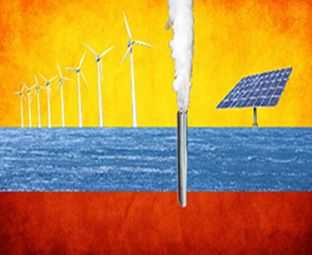
Ecuador eyes Colombia’s power market, LNG imports

Ecuador has installed generating capacity of 7.1GW but consumes 3.7GW, and more hydroelectric capacity is coming on line. Is Quito considering exporting some of the surplus power to Colombia?
Yes. In the wake of the problems at the Ituango hydroelectric plant and the risks brought on by El Niño, Colombia will need to import more electricity. This offers Ecuador the possibility of entering a market which is very competitive and different from ours, but that will give Ecuador the chance to generate more income from exports. We plan to participate, through a marketing firm, in Colombia's power auctions promoted by power and gas market regulator CREG.
According to data from Colombia's grid operator XM, Ecuador exported a peak 2.38GWh/d on 14 August. How much power can Celec offer to Colombia's market?
We can export the equivalent to 250MW-350MW, but to reach these levels we will need to sign a public-private alliance with investors willing to participate in a plan to expand Ecuador's thermoelectric capacity and diversify our power grid, so we can export power to Colombia without creating a risk of shortages in Ecuador.
What steps need to be taken to finish construction of the 254MW Toachi Pilaton hydroelectric project after the procurement contract with Russia's Inter Rao was terminated by Ecuador in 2017?
Celec is considering hiring a firm to carry out the electromechanical equipment installation so we can resume the plant's construction and assure that it will start operations within two years. Most of the equipment is ready to be installed, while some other parts are in port warehouses waiting to be transported to the construction site for installation. We believe that Celec can reach an agreement by 19 December to start this process. The rest of the infrastructure at Toachi Pilaton is almost concluded, and 97pc of civil works are complete.
Is the transmission infrastructure between Colombia and Ecuador sufficient to enable exports on a regular basis? What other projects are required?
There are four 230kV transmission lines linking Ecuador and Colombia in place. Ecuador needs $9bn-10bn in the next decade to complete projects that are already under construction and to build several new projects, with the help of private-sector investors. The new projects include the 2,400MW Santiago and 595MW Cardenillo hydroelectric plants that could be tendered.
We also plan to invite investors to build a 1GW combined-cycle power plant at Monteverde based on LNG. The Monteverde thermoelectric plant will be built in two phases, a first 400MW that should come on line by 2021, and a second 600MW phase by 2027. There are also plans to import LNG to convert thermoelectric facilities in Guayaquil which now use fuel oil or diesel. We could convert 400MW-500MW by investing some $150mn, and this project must be completed within a year and a half.


Trump weighs using $2 billion in CHIPS Act funding for critical minerals

Codelco cuts 2025 copper forecast after El Teniente mine collapse

Electra converts debt, launches $30M raise to jumpstart stalled cobalt refinery

Barrick’s Reko Diq in line for $410M ADB backing

Abcourt readies Sleeping Giant mill to pour first gold since 2014

Nevada army depot to serve as base for first US strategic minerals stockpile

SQM boosts lithium supply plans as prices flick higher

Viridis unveils 200Mt initial reserve for Brazil rare earth project

Tailings could meet much of US critical mineral demand – study

Kyrgyzstan kicks off underground gold mining at Kumtor

Kyrgyzstan kicks off underground gold mining at Kumtor

KoBold Metals granted lithium exploration rights in Congo

Freeport Indonesia to wrap up Gresik plant repairs by early September

Energy Fuels soars on Vulcan Elements partnership

Northern Dynasty sticks to proposal in battle to lift Pebble mine veto

Giustra-backed mining firm teams up with informal miners in Colombia

Critical Metals signs agreement to supply rare earth to US government-funded facility

China extends rare earth controls to imported material

Galan Lithium proceeds with $13M financing for Argentina project

Kyrgyzstan kicks off underground gold mining at Kumtor

Freeport Indonesia to wrap up Gresik plant repairs by early September

Energy Fuels soars on Vulcan Elements partnership

Northern Dynasty sticks to proposal in battle to lift Pebble mine veto

Giustra-backed mining firm teams up with informal miners in Colombia

Critical Metals signs agreement to supply rare earth to US government-funded facility

China extends rare earth controls to imported material

Galan Lithium proceeds with $13M financing for Argentina project

Silver price touches $39 as market weighs rate cut outlook

















